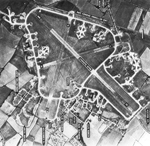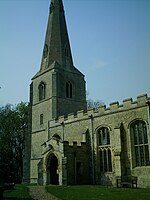Kimbolton Castle
Buildings and structures in HuntingdonshireCastles in CambridgeshireCatherine of AragonCountry houses in CambridgeshireGardens by Capability Brown ... and 5 more
Historic house museums in CambridgeshireJohn Vanbrugh buildingsKimbolton, CambridgeshireTourist attractions in CambridgeshireUse British English from February 2023

Kimbolton Castle is a country house in Kimbolton, Cambridgeshire, England. It was the final home of King Henry VIII's first wife, Catherine of Aragon. Originally a medieval castle but converted into a stately palace, it was the family seat of the Earls and Dukes of Manchester from 1615 until 1950. It now houses Kimbolton School.
Excerpt from the Wikipedia article Kimbolton Castle (License: CC BY-SA 3.0, Authors, Images).Kimbolton Castle
Park Lane, Huntingdonshire Kimbolton
Geographical coordinates (GPS) Address Nearby Places Show on map
Geographical coordinates (GPS)
| Latitude | Longitude |
|---|---|
| N 52.2964 ° | E -0.3884 ° |
Address
Kimbolton School
Park Lane
PE19 5EE Huntingdonshire, Kimbolton
England, United Kingdom
Open on Google Maps








